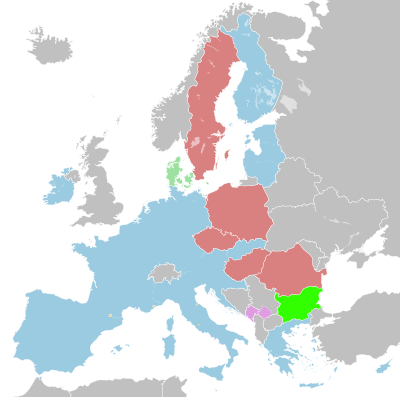
Back آلية سعر الصرف الأوروبية Arabic Европейски валутен механизъм Bulgarian Mecanisme de tipus de canvi Catalan Evropský mechanismus směnných kurzů Czech ERM II Danish Wechselkursmechanismus II German Ευρωπαϊκός μηχανισμός συναλλαγματικών ισοτιμιών Greek Eŭropa Valutoŝanĝa Mekanismo II EO Mecanismo de tipos de cambio Spanish Euroopa vahetuskursimehhanism ET
The European Exchange Rate Mechanism (ERM II) is a system introduced by the European Economic Community on 1 January 1999 alongside the introduction of a single currency, the euro (replacing ERM 1 and the euro's predecessor, the ECU) as part of the European Monetary System (EMS), to reduce exchange rate variability and achieve monetary stability in Europe.
After the adoption of the euro, policy changed to linking currencies of EU countries outside the eurozone to the euro (having the common currency as a central point). The goal was to improve the stability of those currencies, as well as to gain an evaluation mechanism for potential eurozone members. As of March 2024, two currencies participate in ERM II: the Danish krone and the Bulgarian lev.
